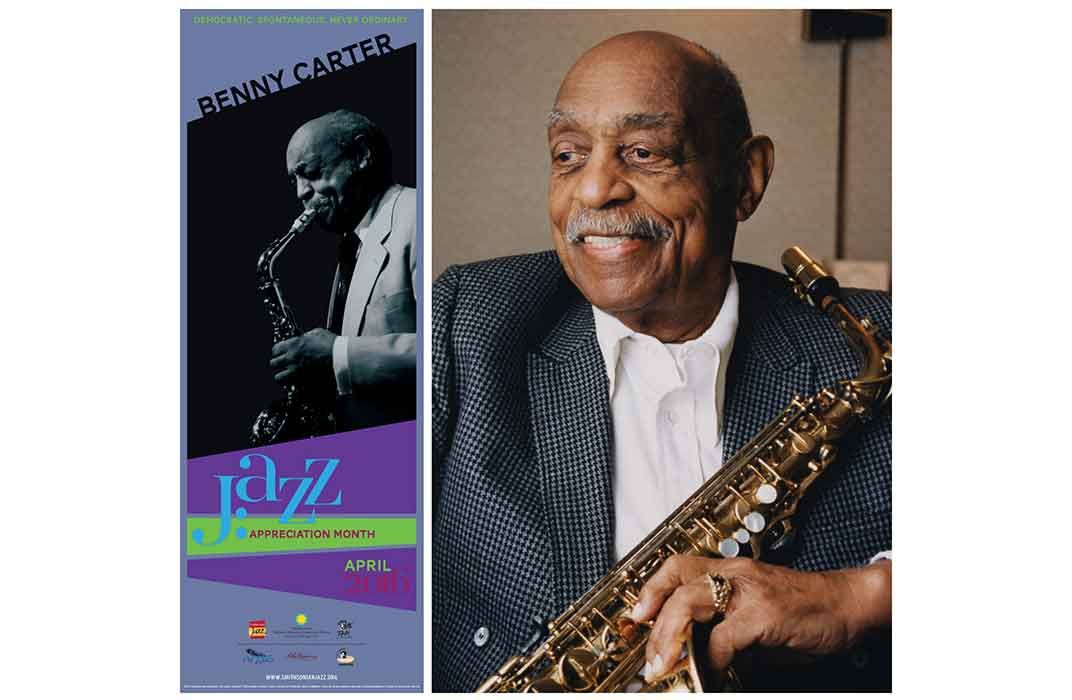It’s Springtime and Jazz Is In Bloom
This year’s Jazz Appreciation Month celebrates the singularly talented alto saxophonist Benny Carter
:focal(530x142:531x143)/https://tf-cmsv2-smithsonianmag-media.s3.amazonaws.com/filer/7d/7b/7d7bad96-3d1e-4095-885e-2b82f8c4e51a/02075701web.jpg)
The story of jazz music is perhaps the purest imaginable distillation of the American underdog narrative. Forged during the African-American crusade for identity, jazz is defined by volatile emotion, by the bleeding forth of undercurrents churning beneath the skin. Authentic jazz fuses an exultant cry of freedom with the pained moans of centuries of subjugation.
It was in recognition of this distinctly American art form that Jazz Appreciation Month (aptly abbreviated JAM) was established 16 years ago.
Its creator, John Edward Hasse—curator of American music at the National Museum of American History—envisioned JAM as a fitting counterpart to Black History Month, a celebration of artistry born of shared cultural tumult.
Each year, those helming JAM at the Smithsonian select a particular artist to focus on, one who embodies the spirit of the music. This year’s choice, Benny Carter, fits the bill to a fare-thee-well: his blend of technical mastery and selfless compassion exemplifies what Hasse was aiming to highlight when he established the now-mature tradition.
In the years immediately following the foundation of JAM, its success was contingent upon the involvement of dedicated benefactors both federal—the Department of State, Department of Energy, and National Endowment for the Arts—and non-federal—BMI, ASCAP, and the Ella Fitzgerald Charitable Foundation, as well as sustained collaboration between the Smithsonian and the International Association for Jazz Education.
By using the Smithsonian as a base of operations from which to extend the welcoming arms of jazz outreach programs, Hasse and his adherents were ultimately able to touch every corner of the nation, and to bring jazz music back into the public consciousness. Indeed, as of now, all 50 U.S. states participate actively each year, as do numerous foreign countries in Europe, South America and elsewhere.
The goal of JAM, however, runs deeper than merely increasing awareness: in the words of Ken Kimery, who heads the Smithsonian Jazz Masterworks Orchestra, JAM should foster “an energy that would… pull in those non-jazz communities,” and “get them to recognize this as something that would provide value towards their communities and their lives.”
This conception of jazz as a means of bringing people together is manifested nowhere better than in Benny Carter. The singularly talented alto saxophonist, who was responsible for such classics as “Symphony in Riffs” and “Key Largo,” is respected as much for his courageous activism as he is for his musical output.
At a time when no American television company would consider enlisting the services of a black musician, Carter flew to Europe to arrange for the BBC. At a time when African-Americans were practically shut out of Hollywood, Carter made a name for himself scoring major motion pictures. At a time when segregation was de rigueur, Carter established an international, interracial band, the likes of which were never before seen.

Hasse, who knew Carter personally, says: “He was a real pioneer, and he walked tall; he walked proudly. He wasn’t one to be cowed or intimidated.”
In calling to our attention the life and times of Benny Carter, JAM reminds us not only of the accomplishments of one remarkable musician, says Hasse, but of the achievements of an entire generation of African-Americans, who carved out an utterly original mode of expression in an environment engineered expressly to stifle them.
In addition to reflecting on the extensive Benny Carter archives held by the National Museum of American History, those looking to participate in the month’s activities have a slew of performance-driven events to look forward to. After all, while appreciating the history of jazz is vital, appreciating its sound is equally so.
As Kimery says, “music has to be heard.”
For the duration of Jazz Appreciation Month, live music in the spirit of Benny Carter will be showcased gratis every Thursday on the ground floor of the Museum of American History between the hours of 12:00 PM and 2:00 PM.
/https://tf-cmsv2-smithsonianmag-media.s3.amazonaws.com/accounts/headshot/DSC_02399_copy.jpg)


/https://tf-cmsv2-smithsonianmag-media.s3.amazonaws.com/accounts/headshot/DSC_02399_copy.jpg)